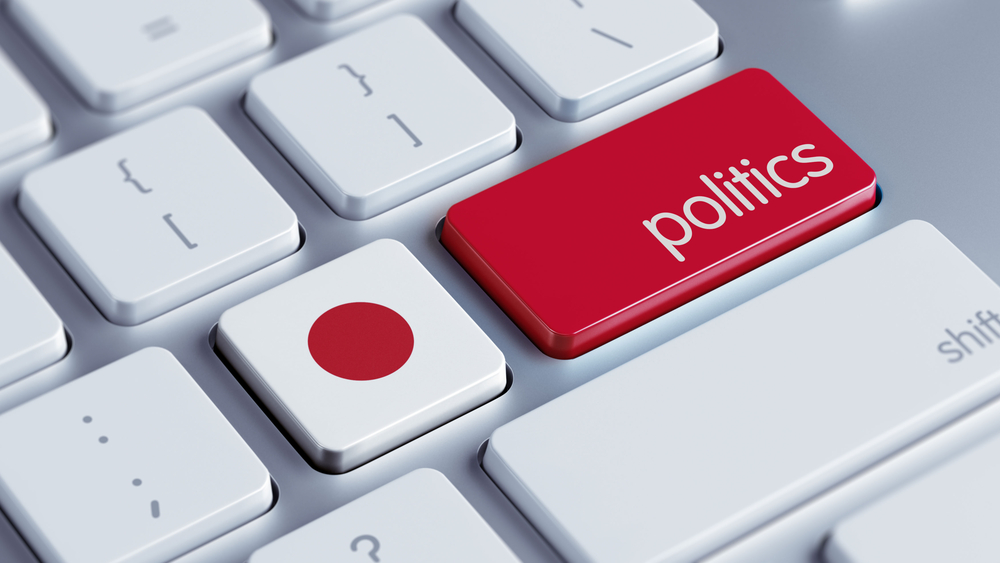Japan’s ‘Womenomics’ needs to Work in Business and Government

Please note that we are not authorised to provide any investment advice. The content on this page is for information purposes only.
Japan has the lowest percentage of women’s political representation in the industrialised world. Women hold only 12 percent of seats in the national legislative assembly, the Diet. This is compared to a 22 percent world average and a 19 percent average in Asia.
Japan’s ranking in the 2015 World Economic Forum Global Gender Gap Report at 101 out of 145 countries indicates some serious problems. Health and education are not problems for the women of Japan; it is economic and political empowerment where the stark inequality lies.
Japan has the lowest percentage of women’s political representation in the industrialised world. Women hold only 12 percent of seats in the national legislative assembly, the Diet. This is compared to a 22 percent world average and a 19 percent average in Asia.
Japan’s ranking in the 2015 World Economic Forum Global Gender Gap Report at 101 out of 145 countries indicates some serious problems. Health and education are not problems for the women of Japan; it is economic and political empowerment where the stark inequality lies.
Alongside female political under-representation, this inequality manifests in the relative dearth of women in most positions of power — women comprise 7 percent of company heads, 18 percent of court judges and 2 percent of the nation’s mayors. The wage gap between Japanese men and women is approximately 27 percent, compared to the OECD average of 16 percent.
So what is the government doing about this lack of women’s political and economic empowerment?
The Abe government publicly and proudly touts its so-called ‘womenomics’ policies that encourage more women to enter the workforce. Womenomics includes the introduction of gender targets to increase the number of women appointed to senior positions in the private sector, targets to encourage men to take childcare leave, increased childcare availability and the expansion of childcare benefits.
However, the government has been mostly silent on the how to address the issue of the political under-representation of women. Numerical targets and other affirmative action measures are being slowly introduced in the private sector and the public service, with varying results. However, similar measures for politics are absent.
In recent years, the government has come under increased pressure from domestic women’s groups to act. There is a longstanding campaign to have more women elected to office. The current campaign is spearheaded by KuÅtasei o suishin suru kai (Q no Kai), a coalition of approximately 25 women’s groups that began working together in 2012 to push the government to introduce gender quotas so as to increase the number of women elected to office.
The group’s representative is Ryoko Akamatsu, a well-respected leader in the women’s movement, former Minister of Education and a key player in the implementation of the 1986 Equal Employment Opportunity Law.
As a signatory to the UN Convention on the Elimination of All Forms of Discrimination Against Women, Japan is also under international pressure to address its shortage of women in decision-making positions.
The combined pressure of international feminist discourses and domestic women’s campaigns appears to be having an impact. On 26 January 2015, a group of nonpartisan Diet members was formed, with the objective of legalising an electoral quota system. This group is headed by the opposition Democratic Party’s Masaharu Nakagawa with the ruling Liberal Democratic Party’s (LDP) Seiko Noda as deputy head.
The alliance drafted two bills to foster greater women’s participation in politics. On 30 May 2016, the two bills were submitted to the Diet — one of them includes provisions aimed at political parties to field equal numbers of male and female candidates.
This bill was submitted by the four opposition parties, but was opposed by the governing LDP because it did not like the words ‘equal numbers’. As I have argued elsewhere, and as reported in Asahi Shimbun, the LDP has ‘minimal interest’ in the issue. The LDP has typically been resistant to gender equality unless it brings obvious economic benefits, like having more women in the workforce.
Would having more women in politics make Japan a better place for women and Japanese society more generally? Women campaigning for the adoption of gender quotas certainly believe so. The Alliance of Feminist Representatives, a cross-partisan group of more than 200 women politicians and a member of Q no Kai, has been pushing for the introduction of quotas since the early 1990s.
The front of its monthly newsletter explicitly states its belief that a society where women represent 40 percent of legislative councils and public decision-making bodies will be ‘a mature society where people with disabilities, children and the elderly will not be disadvantaged as minorities’.
Yet the question of whether more women in politics would make a difference or not is, at heart, a sexist and unfair one. Regardless of whether women ‘make a difference’ or not, their absence reflects a lack of democracy in that the polity is unreflective of the population, and suggests a problem with the democratic election processes. In addition, it is difficult to argue the opposite — that having more women in politics would have any negative consequences.
As feminist political scientist, Anne Phillips argues in her 1995 book The Politics of Presence, changing the composition of an elected assembly is not a guarantee, but it at least opens the door for the possibility of change.
She states ‘It is, in some sense, a shot in the dark: far more likely to reach its target than when those shooting are predominantly male, but still open to all kinds of accident’.
Japanese politics still a man’s world is republished with permission from East Asia Forum




